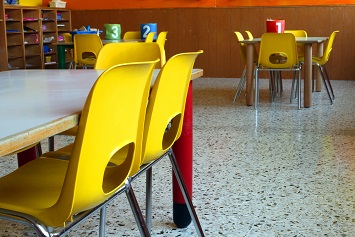The California Division of Occupational Safety and Health (Cal/OSHA) issued guidance on COVID-19 infection protection in childcare services. Employers must update their Injury and Illness Protection Programs (IIPP) to protect workers from the spread of COVID-19, according to Cal/OSHA.
COVID-19 is a respiratory disease caused by a novel coronavirus, also referred to as “the SARS-CoV-2 virus,” first identified in Wuhan City, China in December 2019.
California employers must have IIPPs in place to protect workers from all workplace hazards. The guidance does not extend application of Cal/OSHA’s Aerosol Transmissible Diseases (ATD) standard. Cal/OSHA’s guidance also contains no recommendation for respiratory protection, such as N95 respirators, for childcare service workers. The ATD standard covers hospitals and other healthcare facilities, police and public health services, correctional facilities, drug treatment centers, and homeless shelters.
However, childcare programs must establish and maintain procedures under the state’s IIPP standard to prevent COVID-19 infections and train employees in recognizing risks of infection and the employer’s procedures for preventing infections.
Cal/OSHA insisted employers train employees on:
- Information related to COVID-19 from the U.S. Centers for Disease Control and Prevention (CDC), including how the illness is spread, how to prevent its spread, symptoms, and when to seek medical assistance for sick children or other employees;
- The importance of frequent handwashing with soap and water or using hand sanitizer where soap and water are not available, including when arriving and before leaving a facility; before and after handling food; before and after changing a diaper, giving a child medicine, helping a child use the bathroom, and using the bathroom themselves; after helping a child wipe their mouth or nose or tending to a cut or sore; and after working in children’s play areas;
- Maintaining a distance of more than six feet from others as much as possible;
- Methods for avoiding touching eyes, mouth, and nose;
- Cough and sneeze etiquette;
- Safely using cleaners and disinfectants on objects and surfaces;
- Employer’s plan and procedures to protect employees from COVID-19 infection and plans and procedures to follow when a child becomes sick at a facility; and
- Importance of staying home if they have a frequent cough, sneezing, fever, or difficulty breathing.
Communication with Parents, Guardians
An IIPP should include a plan for sharing information and guidelines with parents and guardians. Information shared with parents should include information from the CDC on COVID-19 symptoms, transmission, prevention, and when to seek medical attention.
Guidelines should include a system for checking on the status of children dropped off by a parent or guardian. The childcare facility should establish procedures for notifying public health officials upon learning someone at the facility has a COVID-19 infection. Childcare facilities should obtain email addresses and home, work, and mobile phone numbers from parents and guardians of children at the facility.
Facilities should establish voluntary methods for parents and guardians to help screen their children for flu-like symptoms like taking their children’s temperatures every day before coming to childcare and to keep their children at home if their temperature is over 100.4 degrees Fahrenheit.
Childcare facilities should establish a curriculum for children in their care on how to prevent the spread of COVID-19, including:
- Frequent hand washing;
- Avoiding close and direct contact with other children and facility staff;
- Telling their teacher as soon as possible if they feel sick;
- Coughing and sneezing etiquette, specifically, covering coughs and sneezes with a tissue or sleeve, not hands; and
- Discouraging children from sharing drinking cups, eating utensils, food, toothbrushes, towels, and other personal items.
Facilities also should have plans for contacting parents and guardians if children become sick and designated areas where sick children can be isolated. Employers also should establish and maintain cleaning and disinfection practices that utilize EPA-approved products for use against the coronavirus.

